I was looking around for a cheap and simple NAS for a small network. Basically it has to serve files through CIFS and DLNA. So a few weeks ago I ordered this NAS over ebay for about 25 euro’s. [20120423164633.jpg 20120423164650.jpg wlx-652-01.png wlx-652-01.thumb.png wlx-652-02.png wlx-652-02.thumb.png wlx-652-03.png wlx-652-03.thumb.png wlx-652-04.png wlx-652-04.thumb.png]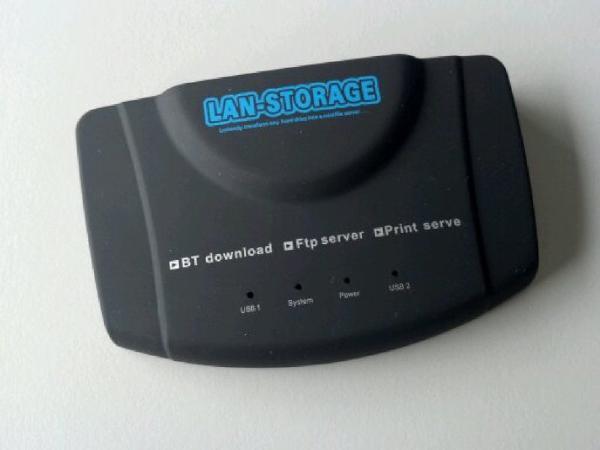 It is a Lan Server WLX-652 an it even came with a power supply, network cable and some software on a CD. [20120423164633.jpg 20120423164650.jpg wlx-652-01.png wlx-652-01.thumb.png wlx-652-02.png wlx-652-02.thumb.png wlx-652-03.png wlx-652-03.thumb.png wlx-652-04.png wlx-652-04.thumb.png]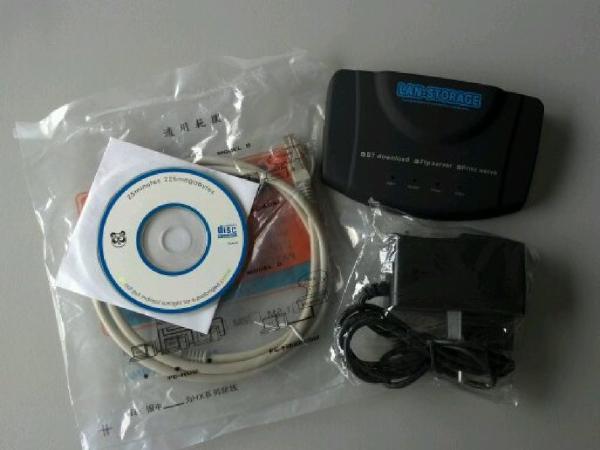 The system has 2 USB ports which allows for disk(s) or a printer to be shared over the network. The nice thing about this simple NAS is that there is a project that makes a differt firmware which a quite a few more options. The project is called Snake OS and can be found on this URL: http://code.google.com/p/snake-os/ Installation was quite straightforward. Hook up the NAS to the LAN and turn it on. If you have a DHCP server on the network, the DHCP server on the NAS will automatically be turned of, so no conflicts here. The system is reachable on the address: 192.168.0.240Point your webbrowser to that address and log in with: Username: admin
password: adminYou should now get the start screen. [20120423164633.jpg 20120423164650.jpg wlx-652-01.png wlx-652-01.thumb.png wlx-652-02.png wlx-652-02.thumb.png wlx-652-03.png wlx-652-03.thumb.png wlx-652-04.png wlx-652-04.thumb.png]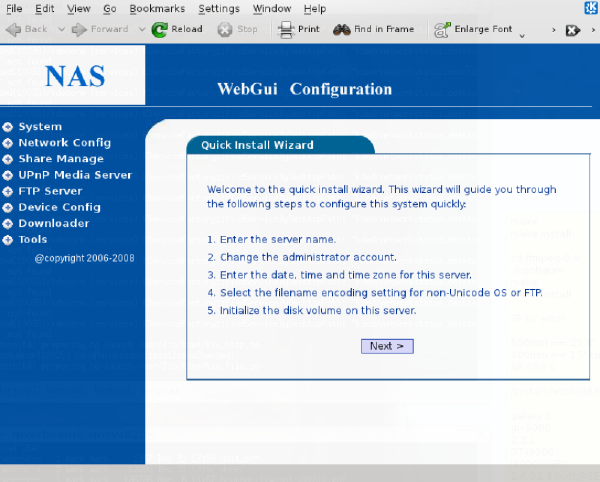 Now to to the Tools menu and choose Update. In a different window, download the snakeos file from the project website. Be sure to download the version which is suitable for the original firmware! (from-original). Unzip the file and upload the .bin file to NAS. [20120423164633.jpg 20120423164650.jpg wlx-652-01.png wlx-652-01.thumb.png wlx-652-02.png wlx-652-02.thumb.png wlx-652-03.png wlx-652-03.thumb.png wlx-652-04.png wlx-652-04.thumb.png]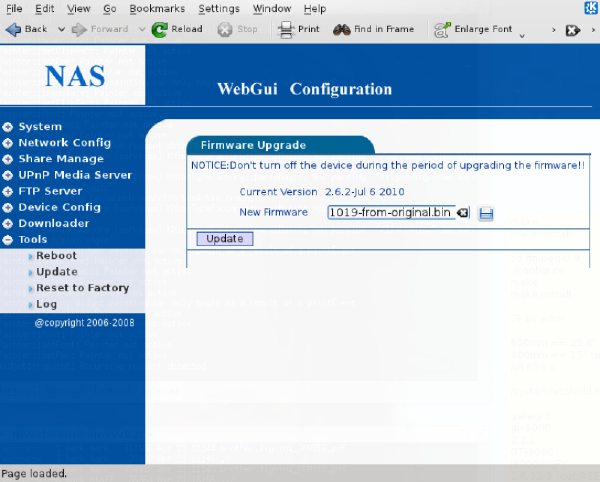 After a bit you should get the following screen: [20120423164633.jpg 20120423164650.jpg wlx-652-01.png wlx-652-01.thumb.png wlx-652-02.png wlx-652-02.thumb.png wlx-652-03.png wlx-652-03.thumb.png wlx-652-04.png wlx-652-04.thumb.png]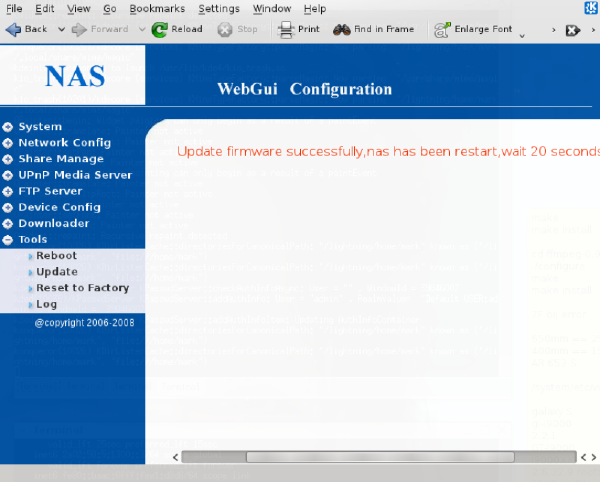 I started a ping to 192.168.0.240, but the Snake OS software actually requests a DHCP lease. So after looking in the log file of the DHCP server I found the new address and entered it in the browser: [20120423164633.jpg 20120423164650.jpg wlx-652-01.png wlx-652-01.thumb.png wlx-652-02.png wlx-652-02.thumb.png wlx-652-03.png wlx-652-03.thumb.png wlx-652-04.png wlx-652-04.thumb.png]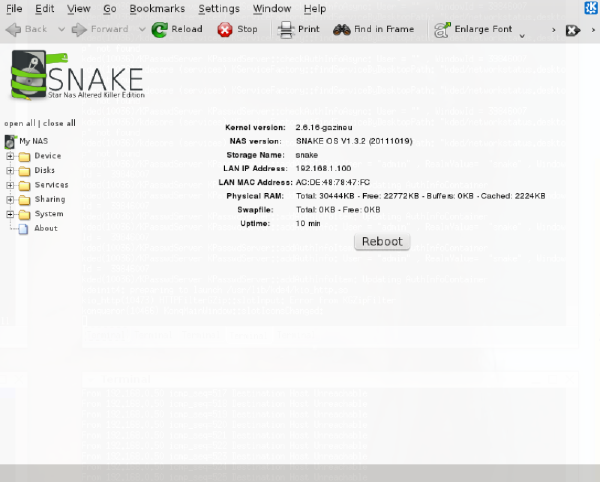 And we have a new system :) The default login for Snake OS is different, it is: login: admin
password: snakeAnd although ssh works out of the box, be aware that the username is not admin but root. The system actually make over 191 bogomips, not bad ;) # cat /proc/cpuinfo
Processor : FA526id(wb) rev 1 (v4l)
BogoMIPS : 191.69
Features : swp half
CPU implementer : 0x66
CPU architecture: 4
CPU variant : 0x0
CPU part : 0x526
CPU revision : 1
Cache type : write-back
Cache clean : cp15 c7 ops
Cache lockdown : format B
Cache format : Harvard
I size : 8192
I assoc : 2
I line length : 16
I sets : 256
D size : 8192
D assoc : 2
D line length : 16
D sets : 256It has about 32MB of RAM and is running kernel 2.6.16. Out of the box it will have CIFS sharing through Samba, but no DLNA. Fortunatly you can upload packages to the NAS as soon as you have configured some extra storage by attaching a harddrive to it. There is a MiniDLNA package which seems to work quite well. Also make sure to configure a swap file on the drive. The amount of memory is not much and when you enable swapping you’re less likely to run the risk of processes being killed because the system is out of memory. While copying some music to the system over CIFS performance wasn’t that bad. Using an ext3 filesystem on the disk it seems to stream about 3MB/sec. Not bad for USB. |